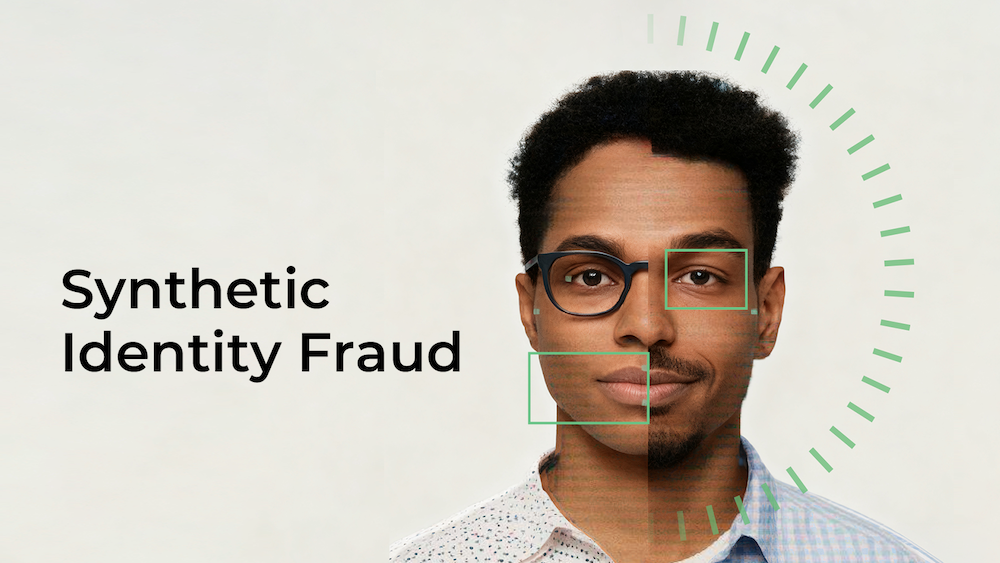We do not offer, support, or condone any illicit services mentioned in this glossary. We also do not sell any data to illegal entities. These terms are provided solely for educational and awareness purposes to help businesses understand and prevent fraud.
What is Synthetic Identity Fraud?
Synthetic identity fraud occurs when fraudsters create a fake identity by combining real and fictitious information to commit financial fraud. This artificial identity is used to open accounts, apply for credit, or engage in other economic activities.
Unlike traditional identity theft, where an existing person’s full identity is stolen, synthetic identity fraud involves the creation of a new, fictitious identity that is partially based on real data, such as a valid Social Security number (SSN) or address.
How Does Synthetic Identity Fraud Work?
Fraudsters create synthetic identities by blending stolen and fabricated information to construct fake identities that appear legitimate, allowing criminals to commit fraud undetected.
How is Synthetic ID Created and Used?
1. Data Gathering
- Stolen or Fabricated SSNs: Fraudsters acquire Social Security numbers (SSNs) through data breaches, dark web purchases, or fabrication. Vulnerable groups such as minors, deceased individuals, and those without credit histories are common targets.
- False Personal Information: They add fake names, birthdates, and addresses to create an identity profile that appears legitimate.
- Manipulated Credit Histories: Some fraudsters use credit piggybacking, attaching synthetic IDs as authorized users on real credit accounts to build a false credit history.
2. Credit Building
- Establishing Credit: Initial credit applications may be denied, but they help create records with credit bureaus, making future approvals easier.
- Piggybacking on Legitimate Credit Accounts: Fraudsters link synthetic identities to existing credit accounts to artificially boost creditworthiness.
3. Account Application
- Opening Bank & Credit Accounts: Once the synthetic ID has a credit footprint, fraudsters open bank accounts, credit cards, and apply for loans.
- Gradual Financial Activity: Fraudsters conduct low-value transactions to appear as legitimate users before escalating fraudulent activity.
4. Exploitation
- Bust-Out Fraud: After gaining high credit limits, the fraudster maxes out loans and credit cards, then disappears without repaying.
- Healthcare and Insurance Fraud: Fraudulent insurance claims filed under synthetic identities can cause insurers financial losses.
- Evasion of Law Enforcement: Criminals use synthetic identities to avoid detection, complicating investigations into fraud and other illicit activities.
Examples of Synthetic Identity Theft
- Financial Fraud: A fraudster applies for a loan using a synthetic identity, builds good credit, then maxes out the credit line without repaying.
- Employment Fraud: Individuals use fraudulent IDs to pass background checks and gain employment under false credentials.
Government Benefit Fraud: Fraudsters apply for government assistance programs using synthetic identities, draining public resources.
What are the Impacts of Synthetic Identity Fraud on Businesses?
- Financial Losses
- Credit Losses: Banks and financial institutions suffer significant losses when synthetic identities default on loans, credit cards, and other financial products.
- Increased Charge-Offs: Unpaid balances from fraudulent accounts directly impact the institution’s bottom line.
- Operational Costs
- Investigation and Resolution: Identifying and resolving cases of synthetic identity fraud requires substantial time and resources, including forensic analysis and customer support.
- Fraud Detection Systems:Investing in advanced fraud detection is costly but essential to combat evolving fraud schemes.
- Regulatory and Compliance Issues
- Regulatory Scrutiny: Financial institutions are subject to regulatory scrutiny and may face penalties if found to have inadequate fraud prevention measures.
- Compliance Costs: Ensuring compliance requires ongoing investment and operational changes.
- Reputational Damage
- Loss of Trust: Repeated incidents of synthetic identity fraud can erode customer trust and confidence in the institution’s ability to protect their information and manage risk.
- Negative Publicity: High-profile cases of synthetic identity fraud can attract media attention and damage the institution’s reputation, making it harder to attract new customers.
- Impact on Credit Markets
- Distorted Credit Data: Synthetic identities can skew credit reporting data, making it difficult for lenders to assess the true creditworthiness of applicants.
- Higher Risk Premiums: Increased fraud risk leads to stricter lending criteria and higher interest rates, impacting legitimate customers.
How to Detect Synthetic Identity Theft
Early detection of synthetic ID fraud is critical for financial institutions, insurers, and businesses that handle sensitive customer data.
1. Advanced Fraud Detection Systems
- Machine Learning & AI: Automated fraud detection tools analyze credit applications and transaction behaviors to spot anomalies.
- Device Fingerprinting: Identifies devices linked to multiple fraud attempts, reducing synthetic fraud incidents.
2. Identity Verification & Behavioral Analytics
- Cross-Checking Data Sources: Financial institutions compare user-submitted information with government databases.
- Anomalous Behavior Detection: Monitoring inconsistent user behaviors, such as applying for multiple loans in a short timeframe, can flag fraudulent activities.
3. Credit Bureau Monitoring
- Irregular Credit Activity Alerts: Unusual patterns, such as an individual with no prior credit history suddenly obtaining multiple credit lines, may indicate synthetic fraud.
- Discrepancies in Identity Records: Mismatched or inconsistent address and employment histories can be warning signs.
How to Prevent Synthetic Identity Theft
Businesses can implement proactive fraud mitigation strategies to combat synthetic identity theft effectively.
1. Strengthening Identity Verification
- Multi-Factor Authentication (MFA): Adds an extra layer of security beyond passwords.
- Biometric Authentication: Facial recognition, device fingerprint, and liveness detection ensure valid identity verification.
- Document Verification: AI-powered tools verify government-issued IDs against live user photos.
2. Enhanced Fraud Detection Technologies
- AI-Powered Risk Scoring: Assigns fraud risk levels based on user behavior, device activity, and past fraud patterns.
- Real-Time Threat Intelligence: Monitors dark web marketplaces for stolen SSNs and synthetic identity data.
3. Strengthening Compliance with KYC & AML Regulations
- Know Your Customer (KYC) Procedures: Ensures thorough identity validation before granting credit.
- Anti-Money Laundering (AML) Controls: Detects and prevents financial crimes linked to synthetic identities.
Find out more about Fraud and AML transaction monitoring in Banks.
4. Consumer Awareness & Education
- Encourage Proactive Identity Monitoring: Users should regularly check their credit reports and report suspicious activity.
- Financial Literacy Initiatives: Educate consumers on identity cloning, data breaches, and fraud prevention strategies.
Learn more about AI-powered synthetic fraud detection solutions for businesses: KYC++ and Global Risk Persona.













